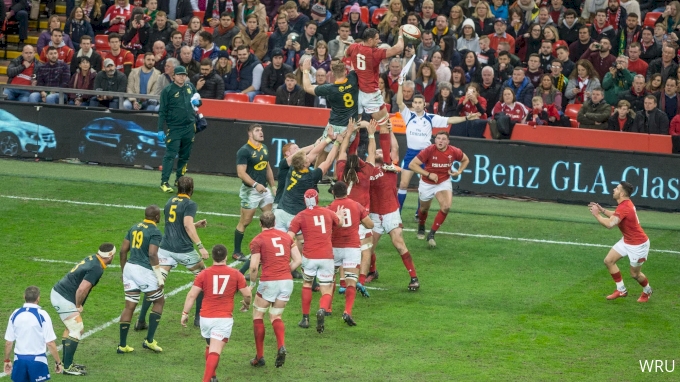Rugby Rules 101: Lineouts
Rugby Rules 101: Lineouts
What does it mean in rugby when someone throws around the term "lineout"? Here we are to fill you in.

- Auto
- 720
- 720
- 480
- 360
- 134
What does it mean when someone throws around the terms "lineout" or "scrum"? And no, a scrum is not when a mosh pit of football or basketball players fight for a loose ball. These are specific rugby terms, and they refer to what are known as "set pieces" in a rugby game.
Set pieces are ways to restart the game after a break in play, usually from an infraction like a knock on or a penalty, or when the ball goes out of play. The two most common set pieces are lineouts and scrums, and here is a breakdown of the former:
Lineout
Every time the ball goes out of bounds, or a player with the ball goes out of bounds, the team that touches the ball last loses possession. The opposing team then gets to perform a lineout, which is similar to a throw-in in soccer or an inbounds play in basketball. However, there are certain rules around the lineout which differentiate it from other types of in-bounding plays.
Here are the laws, according to the World Rugby handbook:
Forming the lineout

- A lineout is formed on the mark of touch
- Each team forms a single line parallel to and half a metre from the mark of touch on their side of the lineout between the five-metre and 15-metre lines. The gap between the lines must be maintained until the ball is thrown in.
- A minimum of two players from each team are required to form a lineout
- The team throwing in determines the maximum number of players that each team may have in the lineout
- Unless the throw is taken as soon as the lineout is formed, the non-throwing team may not have more players (but may have fewer players) in the lineout than the throwing team
- The non-throwing team must have a player between the touchline and the five-metre line. The player stands two metres from the mark of touch on their team’s side of the lineout and two metres from the five-metre line
- If a team elects to have a receiver, the receiver stands between the five-metre and the 15-metre lines, two metres away from their team-mates in the lineout. Each team may have only one receiver.
Throwing the ball into the lineout
- The player throwing in the ball stands on the mark of touch with both feet outside the field of play. The thrower must not step into the field of play until the ball has been thrown
- The ball must:
a.) Be thrown in straight along the mark of touch; and
b.) Reach the five-metre line before it hits the ground or is play
c.) Be thrown in without delay once the lineout is formed - The thrower must not pretend to throw the ball
Players not in the lineout
- Players not participating in the lineout must remain at least 10 metres from the mark of touch on their own team’s side or behind the goal line if this is nearer. If the ball is thrown in before a player is onside, the player will not be liable to sanction if the player immediately retires to the onside position. The player cannot be put onside by the action of any other player
- Once the ball has been thrown in by a team-mate, players who are not participating in the lineout may move forward. If that occurs, then their opponents may also move forward. If the ball does not go beyond the 15-metre line, the players will not be liable to sanction if they immediately retire to their respective offside lines